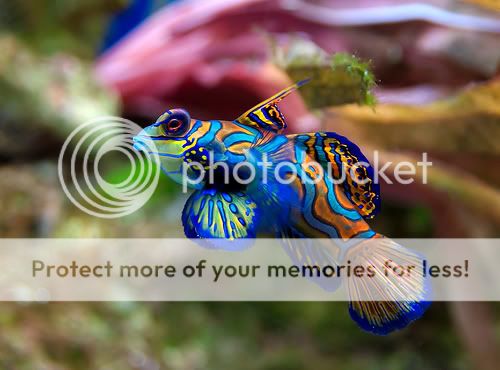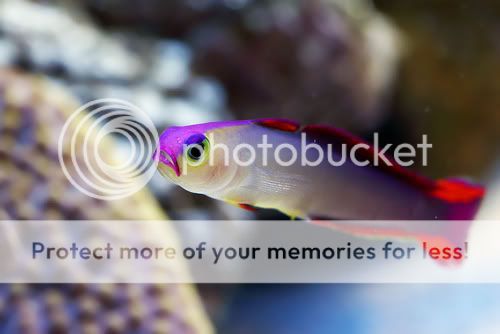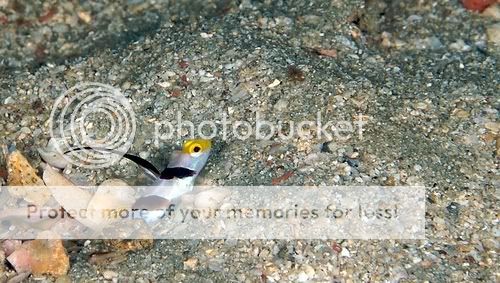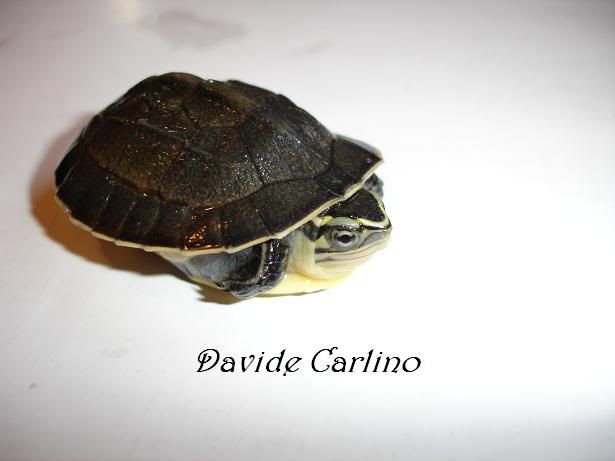Fauna #48: Asian Box Turtle or Southeast Asian Box Turtle
Com.name: Asian Box Turtle or Southeast Asian Box Turtle
Sci.name: Cuora amboinensis
Classification: Reptiles
Family: Turtles
Location/Origin:
It is found in the Nicobar Islands, eastern India(Assam), Bangladesh, Myanmar, Thailand, Cambodia, Laos, central and southern Vietnam, West Malaysia, Singapore, Philippines (Leyte, Luzon, Mindanao, Samar, Negros, Panay, etc.), Indonesia (Sulawesi, Ambon, Sumatra, Borneo, East Malaysia, Brunei, Nias, Enggano, Simeulue, Java, Sumbawa, Halmahera, Ceram, Seram, Buru, East Timor, Bali, Palawan and the Moluccas), and possibly Sri Lanka. The type locality is "Amboine" (or "Amboina") Island, today Ambon in Indonesia.
Status: Vulnerable
Description:
These turtles have blackish-brown to olive brown colored shells that are not as ornate as many other box turtles. All have a blackish olive head with three yellow stripes on the side. The male can be identified by the slightly concave shape to its plastron. There is no specific pattern to what the underbellies may look like, for either ***. The only true way of telling age is to guess by the texture of the shell, as growth rings form irregularly.
There are four subspecies which are primarily differentiated by differences in the color and shape of the carapace:[1]
1. Cuora amboinensis amboinensis eastern Indonesian islands: Ambon, Sulawesi, the Moluccas, Buru, Seram and East Timor and smaller islands in the region. For individuals suspected to be of this subspecies: Ratio of carapace length / height: 3.08. Average ratio dimensions of plastron spots: 1.21 (almost circular)
2.Cuora amboinensis couro (Schweigger, 1812)[verification needed] south Indonesian islands: Sumatra, Java, Bali and Sumbawa. Darker, more oval black spots on plastron, flatter carapace.
3.Cuora amboinensis kamaroma (Rummler & Fritz, 1991)[verification needed] Malayan Box Turtle. Mainland Indochina (South and Central Vietnam, southern Laos & Cambodia), Thailand (Phang Nga Province etc.), Singapore and mainland Malaysia. More domed carapace and smaller, more elongated spotting of black pigments of plastron. Average ratio of carapace length / height: 2.82. Average ratio dimensions of plastron spots: 2.14 (small and elongated)
4. Cuora amboinensis lineata (McCord & Philippen, 199[verification needed] Myanmar.
Light stripe along keel of carapace.
Several distinct populations are believed to represent up to 4 more subspecies, or at least striking varieties.
-Nicobar Islands
-Eastern India (Assam), Bangladesh and possibly Sri Lanka
-Borneo, the Malaysian Islands, Brunei and Palawan
-Philippines (Leyte, Luzon, Mindanao, Samar, Negros, Panay etc.)
C. a. kamaroma has hybridized in captivity with the Vietnamese Pond Turtle - a species nearly extinct in the wild - and with males of the Chinese Pond Turtle (Chinemys reevesii). Other hybrids are known, like C. amboinensis Χ Cuora trifasciata.
Ecology and status:
They are omnivorous, with younger turtles tending towards more meat consumption and older turtles eating a more herbivorous diet.
Although Cuora amboinensis is classified as Vulnerable by the IUCN, they are able to thrive in some areas of the world. For example, they can be found in the storm drains of Brunei. These are seriously polluted, and yet seem to be extremely popular habitat for these turtles and other animals that can withstand eutrophication. In some places, this species is hunted for use in folk medicine[5].
Cuora amboinensis can be quite difficult to breed in captivity, compared with other box turtles. These turtles have a mating ritual very similar to that of other box turtles. No courtship occurs, the male simply climbs upon the female. He then snaps at her head, so that she closes to front half of her shell, opening the back.
Pet care:
Any individual considering a turtle as a pet should thoroughly research both general care and the care of the particular species in which they are interested. Individuals considering a Cuora amboinensis as a pet should keep in mind that it is a tropical, non-hibernating species who needs much warmer water (about 82 degrees F) than many other semi-aquatic species. The adult Cuora amboinensis is small in comparison to more well-known species such as the red-eared slider or cooter, but a fully grown adult will generally need at least a 55-gallon tank and this habitat should be semi-aquatic, not terrestrial.
Cuora amboinensis is far more aquatic than many other box turtle species. Unfortunately, this has often led to pet Cuoras being incorrectly housed in terrestrial habitats. Although they are clumsy swimmers and need shallower water than other semi-aquatic turtles that are stronger swimmers, (e.g., sliders, cooters, and painteds), they tend to vastly prefer being in the water to on land. In the wild, they will often live in almost entirely in water only emerging to bask and to lay eggs. They can even mate in the water.
Reference:
www.iucnredlist.org
Cuora amboinensis - Wikipedia, the free encyclopedia
Results 91 to 100 of 193
-
02-15-2010, 11:41 PM #91
-
02-15-2010, 11:42 PM #92
Fauna #49: Asian Leaf Turtle

Com.name: Leaf turtle, bao
Sci.name: Cyclemys dentata
Classification: Reptiles
Family: Turtles
Location/Origin:
The turtle can be found in North India, Bangladesh, Myanmar (Burma), Thailand, Cambodia, Vietnam, West Malaysia, Indonesia (Sumatra, Java, Borneo, Bali), Philippines (Palawan: Calamian Islands etc.), and China.
Status: Endangered
Description:
The Asian Leaf Turtle Cyclemys dentata is a species of turtle found in Southeast Asia. They are also common in the pet trade.
Asian leaf turtles can grow 6 to 9.5 inches (15 to 24 cm) long.
Reference:
The Reptile Database
Asian Leaf Turtle - Wikipedia, the free encyclopedia
-
02-17-2010, 02:20 AM #93
Courtesy of moy1moy1:
-> https://www.istorya.net/forums/scienc...ine_soefa.html
Fauna #51:Regal Tang

Com.name: royal blue tang, palette surgeonfish, blue tang (leading to confusion with the Atlantic Acanthurus coeruleus), royal blue tang, hippo tang, flagtail surgeonfish and blue surgeonfish, dory
Sci.name: Paracanthurus hepatus
Classification: Fish
Family: Surgeonfishes
Location/Origin:
The species' range is broad, but it is nowhere common. It can be found throughout the Indo-Pacific. It is seen in reefs of East Africa,Japan, Samoa, New Caledonia, and the Great Barrier Reef.
Description:
The blue tang is of minor commercial fisheries importance, however, it is a bait fish. The flesh has a strong odor and is not highly prized. This fish may cause ciguatera poisoning if consumed by humans. However, blue tangs are collected commercially for the aquarium trade. Handling the tang risks the chances of being badly cut by the caudal spine. These spines, on both sides of the caudal peduncle, are extended from the body when the fish becomes excited. The quick, thrashing sideways motion of the tail can produce deep wounds that result in swelling and discoloration, posing a risk of infection. It is believed that some species of Acanthurus have venom glands while others do not. The spines are used only as a method of protection against aggressors. As juveniles, they require a 40 gallon aquarium, but as adults require a 75 gallon tank. They will eat frozen fish such as mysids and krill. Adults nibble algae and nori. Having more than one in a small aquarium can cause stress, which can lead to injury from fighting. This fish is reef compatible will not eat corals or anemones.
Reference:
Paracanthurus hepatus - Wikipedia, the free encyclopedia
-
02-17-2010, 02:21 AM #94
Courtesy of moy1moy1:
-> https://www.istorya.net/forums/scienc...ine_soefa.html
Fauna #52:Bluering angelfish

Com.name: bluering angelfish
Sci.name: Pomacanthus annularis
Classification: Fish
Family: Angelfishes
Location/Origin:
Found in the Indo-West Pacific oceans from East Africa, throughout Indonesia and New Guinea to New Caledonia, north to southern Japan.
Description: It is highly sought after and prized member of the Pomacanthus genus, composed of large marine angelfish. Bluering angelfish can reach up to 12 inches in the wild and often obtain lengths near that in captivity. In the aquarium bluering angelfish are algae grazers but consume fish and coral flesh as well. They are known to eat shrimps and nibble on both large polyped stony and small polyped stony corals. Overall most seasoned reef aquarists do not recommend keeping this species in a reef aquarium due to these habits.
Reference:
Blue ring angelfish - Wikipedia, the free encyclopedia
-
02-17-2010, 02:21 AM #95
Courtesy of moy1moy1:
-> https://www.istorya.net/forums/scienc...ine_soefa.html
Fauna #53: Flame Angelfish

Com.name: Flame angelfish
Sci.name: Centropyge loricula
Classification:Fishes
Family:Angelfishes
Location/Origin:
Found in tropical waters of the Pacific Ocean. Tubataha reef, Philippines
Description:
The Flame Angel is known to be shy upon introduction to an established aquarium (especially smaller specimens) but within a week will gain confidence and is then constantly seen grazing around live rock during the day. Will fight with other fish if challenged for space or kept with similar species (dwarf angels) in a small tank. Some texts advise that this should be a final addition to a tank. It is found in various reefs of Oceania, most common in Marshall, Line, and Cook Islands. The fish is also, although less commonly, found in the Hawaiian islands. In captivity, this species feeds on a variety of food including live brine shrimp, frozen meaty foods as well as spirulina, seaweed sheets and pellets. Easy to feed.
Reference:
Flame angel - Wikipedia, the free encyclopedia
-
02-17-2010, 02:22 AM #96
Courtesy of moy1moy1:
-> https://www.istorya.net/forums/scienc...ine_soefa.html
Fauna #54:Blue-green Damselfish

Com.name: Blue-green Damselfish, Green Chromis, Blue-green Chromis
Sci.name: Chromis viridis
Classification: Fishes
Family: Damselfishes
Location/Origin: Indo-Pacific
Description:
The Green Chromis is a species of damselfish. Individuals tend to be iridescent apple-green and light blue, and reach a length of about 3 in (8 cm). It is sometimes called "Blue-green Chromis", but that may also mean C. caerulea or Blue Puller, a close relative that is sometimes considered conspecific. The species is found in the Indo-Pacific. They live in large aggregations above Acropora corals in sheltered areas such aslagoons and reef flats and feed on phytoplankton. Juveniles live closely tied to individual coral heads. C. viridis spawn over sand and rubble. The male prepares the nest which is shared with several females. The large number of eggs will hatch in 2-3 days. The male guards the nest, ventilating it with its fins and feeding on those eggs that do not hatch. In a marine aquarium, schools should be kept in small groups of odd numbers. The Green Chromis is often considered an ideal starter fish for the saltwater aquarium novice and is a peaceful and hardy species. A small school will be more comfortable in a 30 gallon tank but a single specimen can be kept in a 10 gallon tank. The Green Chromis should not be housed with larger predatory fish, as they may become food themselves. Groupers, lionfish, and eels all present an element of danger for this peaceful species.
Reference:
Chromis viridis - Wikipedia, the free encyclopedia
-
02-17-2010, 02:26 AM #97
Courtesy of moy1moy1:
-> https://www.istorya.net/forums/scienc...ine_soefa.html
Fauna #55: False Clown Anemone Fish

Com.name: False Clown Anemone Fish, Clown fish, Anemone Fish, Clown Anemone fish, Ocellaris Clownfish, False Percula Clownfish “Nemo”
Sci.name: Amphiprion ocellaris
Classification: Fish
Family: Clownfishes-Anemonefishes
Location/Origin: Found in coral reefs of the Indo-Pacific
Description: This clown anemonefish can be recognised by its orange colour with three white bars and black markings on the fins. It grows to about eight centimeters (three inches)in length. One can differentiate between Percula (true) and Ocellaris (false) by their respective colors and patterns. Ocellaris are usually less vibrantly colored, and have 11 dorsal fin-spines instead of 10, as on the Percula. Also the species have different eye arrangements, Percula have bright orange irises, making their eyes appear smaller whereas Ocellaris have grey/orange irises which make the species eyes appear bigger. There is a rare melanistic variety hailing from the reefs around Darwin, Australia, that is a dark black colour with the normal white stripes. Although not common in the wild, they are becoming more and more popular in the aquarium hobby.
Reference:
Ocellaris clownfish - Wikipedia, the free encyclopedia
-
02-17-2010, 02:31 AM #98
Courtesy of moy1moy1:
-> https://www.istorya.net/forums/scienc...ine_soefa.html
Fauna #60: Mandarin fish (Repost of Fauna # 32)

Com.name: mandarin goby, mandarin blenny, mandarin fish, dragonette, mandarin dragonet
Sci.name: Synchiropus splendidus
Classification: Fish
Family: Dragonet
Location/Origin:
The mandarinfish is native to the Pacific, ranging approximately from the Ryukyu Islands south to Australia. (refer to map).
Description:
To date, S. splendidus is one of only two animal species known to have blue colouring because of cellular pigment, the other being the closely related LSD-fish (S. picturatus). The name "cyanophore" was proposed for the blue chromatophores, or pigment-containing and light-reflecting cells. In all other known cases, the colour blue comes from thin-film interference from piles of flat, thin and reflecting purine crystals. Mandarinfish are reef dwellers, preferring sheltered lagoons and inshore reefs. While they are slow-moving and fairly common within their range, they are not easily seen due to their bottom-feeding habit and their small size (reaching only about 6 cm). They feed primarily on small crustaceans and other invertebrates. Based on the gut analyses of 7 wild fish Sadovy et al. (2001) determined that the mandarinfish has a mixed diet that harpacticoid copepods, polychaete worms, small gastropods, gammaridean amphipods, fish eggs and ostracods. In the wild, feeding is continuous during daytime; the fish peck selectively at small prey trapped on corral substrate in a home range of many square meters Despite their popularity in the aquarium trade, mandarinfish are considered difficult to keep, as their feeding habits are very specific. Some fish never adapt to aquarium life, refusing to eat anything but live amphipods and copepods (as in the wild), though individuals that do acclimatize to aquarium food are considered to be quite hardy and highly resistant to diseases such as ich. They cannot contract the disease Ichthyophthirius because they do not have the skin type that this common aquarium disease affects.
Reference:
Mandarinfish - Wikipedia, the free encyclopediaLast edited by gaevwa; 02-26-2010 at 12:01 AM.
-
02-17-2010, 02:32 AM #99
Courtesy of moy1moy1:
-> https://www.istorya.net/forums/scienc...ine_soefa.html
Fauna #61: Purple firefish

Com.name: purple fire fish, elegant firefish, purple fish
Sci.name: Nemateleotris decora
Classification: fishes
Family: dartfish
Location/Origin:
This species is found in the Indo-West Pacific, from Mauritius to Samoa, north to Ryukyu Islands, and south to New Caledonia, from 2570 metres ( ft) in depth. It is found over hard, open bottoms of reefs and sandy patches, as well as deeper coastal outer reef drop-offs. (refer to map).
Description:
This fish is popular in reef aquariums and is resistant to disease. These fish are relatively docile and will not attack tankmates where kept in a suitably sized aquarium; however, if kept in confined quarters these fish may squabble over territory. Firefish are commonly kept in nano reef aquariums. Firefish are prolific leapers. Thus, an aquarist contemplating the acquisition of either of these species should be certain that the aquarium hood will not easily allow the firefish to leap from the tank and expire. These fish should also be provided with rockwork to hide in. This and other species of firefish are occasionally spawned in captivity. This species is often found in pairs and is monogamous. These fish feed on zooplankton, especially copepods and crustacean larvae. They will dart into holes when alarmed.
Reference:
Elegant firefish - Wikipedia, the free encyclopedia
-
02-17-2010, 02:32 AM #100
Courtesy of moy1moy1:
-> https://www.istorya.net/forums/scienc...ine_soefa.html
Fauna #62: Black-ray goby

Com.name: black ray goby
Sci.name: Stonogobiops nematodes
Classification: fish
Family: goby
Location/Origin:
This goby is commonly found in the western Indo-pacific (Indonesia and the Philippines) inhabiting sandy bottoms and rocky outcrops at depths ranging from 60 to 100 feet.
Description:
The Black-ray Goby is a species of marine goby and is a member of the family of High Fin Gobies. This type of goby is also sometimes attributed the common name "Shrimp Goby" or "Watchman Goby". This is due to the interesting symbiotic relationship that these gobies can form with Randall's pistol shrimp. Adult fish can grow up to two inches in length, with the striking pointed dorsal fin becoming more raised and pronounced in adulthood. This elongated fin is the most obvious distinguishing feature between the black-ray goby and its close cousin, the yellow snout goby (S. Xanthorhinica). The fish are beautifully coloured with four diagonal brown stripes across a white body, and a distinctive yellow head. It is almost impossible for anybody less than a specialized expert in the specific field of these types of fish to discern differences between males and females of the species. This fish is very docile and poses almost no threat to any other livestock inhabiting a typical marine aquarium. This passiveness makes it a perfect tankmate for delicate species like sea horses or pipefish. In fact, it is in reality quite shy, and when first introduced into an aquarium, may take up to several weeks before it is bold enough to leave its hiding place, or bolt hole. Whilst this fish can display aggression towards other tank inhabitants by opening its mouth and "yawning" at them, this is mostly show and the goby will quickly turn tail and hide if confronted. The goby will spend most of its time hovering about two inches above its bolt hole, searching for scraps of food in the water column. If scared or startled, it will slowly retreat towards its hole. If the danger does not go away, it will dart inside at lightning speed. Mated pairs of this fish are very rare and difficult to come by. Individual males may fight if placed in a tank smaller than about 50 gallons (~200 litres). This goby, along with the others of its genus are renowned for their remarkable relationship with Randall's shrimp (or Candy-stripe pistol shrimp, Alpheus Randalli). This particular genus of goby does not associate with any other type of shrimp in the wild. The shrimp spends the day digging a burrow in the sand in which both live. Burrows usually measure up to one inch in diameter, and can reach up to four feet in length. The goby has much better eyesight than the shrimp, and, as such, acts as the watchman for both of them, keeping an eye out of danger. The two animals maintain continuous contact, with the shrimp placing one of its antennapermanently on the goby's tail. When danger threatens, the goby will make continuous flicks of its tail, warning the shrimp that there is a predator nearby, and the shrimp will remain safely in the burrow. If the danger reaches a certain level, the goby will dart into the burrow after the shrimp. At night, the goby will go into the burrow, and the shrimp will collapse the entrance to close it off. The burrow is exited the next day by the goby blasting its way out and collapsing the burrow. The shrimp then spends the next day laboriously rebuilding the entrance to the burrow. Both animals have also been known to share food with each other. In the wild, most burrows are shared by male/female goby pairs, with their respective shrimp partners, and the female goby will use this burrow as a nesting site to lay her eggs. The obvious benefits to both organisms of this symbiotic relationship make the interaction a form of mutualism. Here is an interesting example of this. The other fish is a dartfish (genus Ptereleotris). These fish are often found as unwelcome but ignored guests sharing the burrow with goby and shrimp.
Reference:
Black-ray goby - Wikipedia, the free encyclopedia
Advertisement
Similar Threads |
|







 Reply With Quote
Reply With Quote
